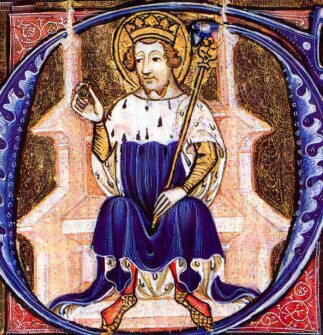Edward the Confessor (1042 - 4th January 1066): In 1042, Edward the Confessor was crowned King of England. His Mother was Emma of Normandy, so Edward had been brought up in Normandy in northern France. This meant that when Edward became King of England, he already knew about the highly organised administration and military gifts of the Norman Provence, and he greatly appreciated what the Normans could do for England if they worked in his Royal Court. After 1042, Normans took many powerful roles in the English Church and State.
This Norman influence in British authority was not popular with the Saxon and Danish nobility, who had huge prominence in British ruling throughout the Anglo-Saxon period. In particular, the Godwin Earls of Wessex were key players in the riots and insurrection of the 1050s that took place in protest of long standing Danish and Saxon nobility being overlooked in favour of the Normans from France. Harold Godwinson was a vicious soldier, who crushed Welsh warriors who sought to reclaim lost land, and even over threw his own Brother from the Earldom of Northumbria. In the last three years of Edward's life, Harold Godwinson was so close to the King, and in such an influential position, that effectively, Harold was Edwards’s puppet master.
Harold II (January 5th 1066 - October 1066): When Edward the Confessor died on 4th January 1066, because of Harold's close and influential position with the King, and the fact that Edward had no children, Harold was the natural successor. England's ancient group of senior and wise men, the Witanagemot, approved of Harold as the next King of England. Harold II was crowned the day after Edwards Death.
Unfortunately for Harold, two other men thought that their claim to the English throne was greater than his. William, the Duke of Normandy, claimed that in 1051, Edward had promised him the English throne upon the latter’s death. He also claimed that in 1064, Harold acknowledged and accepted Edward's promise to William. Harald III of Norway, or Hardrada as he was known, claimed that rightly, the English throne was his, due to blood and marriage connections to Edward and the Saxons, and some treaty deals.
Harold II expected both men to attack England in an attempt to claim the throne. Hardrada's troops were first, arriving in Yorkshire in September, while William's army were trapped in the English Channel by difficult winds and tides. Harold II marched his fyrd, or militia, from the south coast to meet Hardrada's army from Norway, who were being helped by the vengeful brother that Harold removed from the Earldom of Northumbria. Before Harold's fyrd from the south met Hardrada's troops in the north, Hardrada and Harold's brother, Tostig, had already crushed the English forces that were waiting for Hardrada's troops. Harold's troops caught the invaders by surprise when they met them at Stamford Bridge. Both Hardrada and Tostig were killed, and the Viking age in England was over.
Harold II's troops didn't have time to rest. The winds in the channel had died away, and Duke William's 7000 men had landed in Pevensey in late September. Two weeks later, Harold and his men, fresh from the battle in the North of England, arrived at Senlac Hill to block the Norman's route to London. Harold II had a clever strategy; to use the natural defensive position at the top of the hill, and let the Norman cavalry tire themselves out by running uphill against the shield wall of the English infantry. For most of the day, this worked very well. In fact, Harold's strategy worked until William's forces faked a retreat, and lured Harold's forces down from the top of the hill. The English were now on flat ground, where the Normans easily defeated them. Harold was injured, and news of this apparently spread throughout the English troops, resulting in many fleeing into the nearby forests. After the battle, now known as the Battle of Hastings, William rested at Hastings for several weeks.
William I 'The Conqueror' (December 25th 1066 - September 1087): William I of England was crowned at Westminster Abbey on Christmas day. William and his decedents then began to fully conquer England, shaping a political system and a landscape that is, in parts, still familiar to us today.



No comments:
Post a Comment